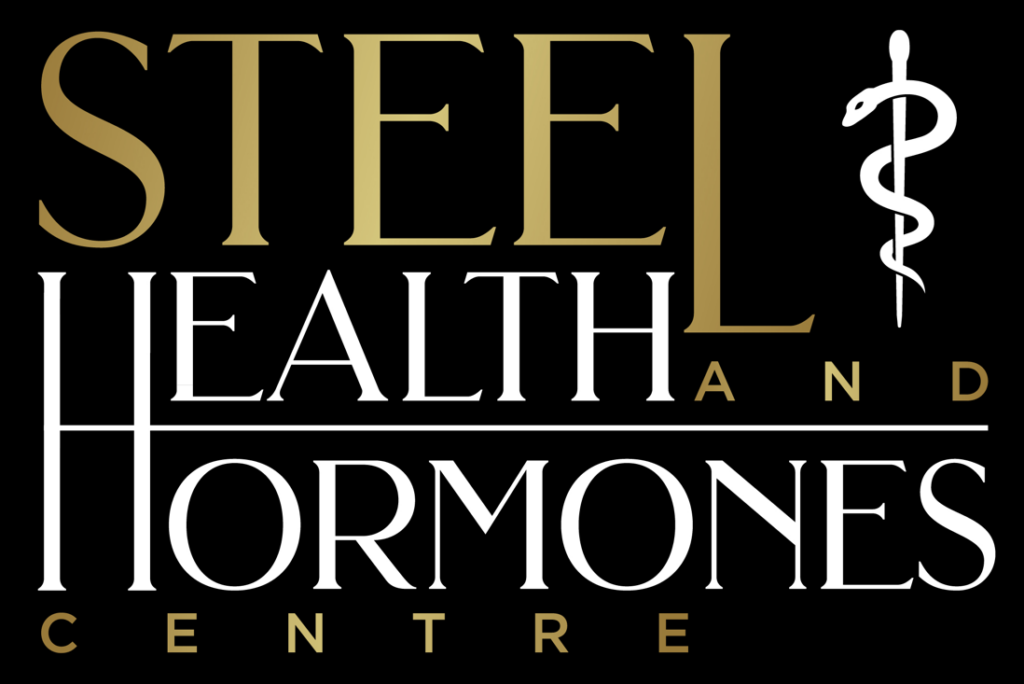At Steel Health and Hormones Centre, we offer medical weight loss services. While being an HRT clinic located in Allegheny and Westmoreland County, we serve the greater-Pittsburgh area. At our hormone replacement therapy clinic we prefer compounded semaglutide and tirzepatide to assist overweight and obese patients in finally gaining control over their weight. As a result, there are several factors I must address about the implementation of these medications for weight loss.
Before delving into this discussion, I want to emphasize that I’m not a doctor. Despite having healthcare providers on my team, my perspective comes from a mathematical background coupled with a decade of involvement in the fitness industry.
Firstly, let’s explore how medications like semaglutide and tirzepatide aid in weight loss. These drugs belong to a class called Glucagon Like Peptide 1 (GLP-1) Receptor Agonists. They function by activating GLP-1 receptors in the pancreas, enhancing insulin release while posing a low risk of hypoglycemia (low blood sugar). They also act on the central nervous system and gastrointestinal tract’s GLP-1 receptors, reducing appetite and slowing down gastrointestinal emptying (slower digestion). These combined actions often lead to sustained and significant weight loss for many patients.
Lately, esteemed professionals in the field have emphasized that while GLP-1 agonists can facilitate weight loss, a substantial portion of the weight reduction stems from the loss of lean tissue.
Dr. Peter Attia, widely respected for his insights into longevity, discusses on his podcast “The Drive” that these medications result in a considerable decrease in lean body tissue. Although they aid in weight loss and maintenance while being used, many individuals regain the weight after discontinuing the medication.
Moreover, a seminar on BHRT I attended showcased the main speaker demonstrating how he experienced weakness while taking semaglutide.
How should we interpret this information? That decision rests with those in lab coats, but I find this information not entirely surprising. My fitness background offers unique insight into this dilemma.
I’ve worked with over 1000 individuals on their fitness journeys and observed some key patterns among those who lose weight and sustain it:
– They consistently engage in resistance training.
– They maintain a high-protein diet consisting of minimally processed foods and limited alcohol.
– They regularly participate in cardiovascular exercise.
From my experience, those who have lost substantial weight and maintained it haven’t skipped these steps.
Allow me to explain why each of these aspects is crucial:
Weight loss requires consuming fewer calories than you burn, adhering to the first law of thermodynamics. Regardless of beliefs, the body cannot defy the laws of physics—it always comes down to this equation. However, achieving this becomes notably challenging with suboptimal hormonal profiles, emphasizing the importance of optimizing with us at Steel Health and Hormones Centre. Yet, it’s crucial to note that simply ceasing to eat eventually leads to starvation, proving the point.
Consistent resistance training aids in preserving lean tissue, which is metabolically more demanding to maintain. Having an extra 10 pounds of muscle, thanks to resistance training, increases your body’s calorie expenditure. Moreover, the micro-trauma from activities that build and maintain muscle tissue has an additional metabolic cost, further aiding in calorie expenditure.
Sustained weight loss also hinges on a high-protein diet, working in tandem with resistance training. Research suggests that a high-protein diet better preserves lean tissue during a calorie deficit and is more satiating than a low-protein diet. It’s easy to consume 1000 calories of cake in one sitting, but nearly impossible to consume the same amount from chicken breast in an entire day. A high-protein diet aids in reducing daily calorie intake, beneficial for weight loss and preservation.
Lastly, everyone I’ve seen who maintains weight loss consistently incorporates cardio exercises into their routine. Most clients engage in activities like boxing, mountain biking, running, or playing sports, elevating their heart rates for extended periods on multiple occasions each week. This not only yields immense health benefits but also increases calorie expenditure and occupies time that could otherwise involve mindless snacking.
These three aspects are consistent among everyone who achieves long-term weight loss.
Now, comparing this to my observations of people taking GLP-1 Agonists:
– Take the medication, eat slightly less of their usual diet, and adjust the dosage as needed. That’s it.
If you transition from the standard American diet—high-calorie, moderate-protein, high-fat, high-carb—to slightly less of the same macronutrient profile, weight loss occurs. However, the type of weight lost matters. While body fat decreases, a substantial amount of lean tissue is also lost. Remember, maintaining lean tissue during a calorie deficit requires a high-protein diet.
Additionally, most clients in medical weight loss programs I’ve seen don’t alter their exercise habits. Preserving lean tissue demands resistance training. You need to provide your body with reasons, aided by a high-protein diet, to maintain lean tissue. Remember, this lean tissue, along with the activities preserving it, helps stave off body fat in the future.
Finally, many people initiating these medications don’t engage in cardio exercises. Incorporating an active, gamified form of cardio can positively alter your lifestyle. It offers an activity unrelated to food or alcohol, burns calories throughout, and helps avoid mindless snacking.
While I’m not a doctor, my founding vision for Steel Health and Hormones Centre was to help people transform their lives through a blend of medication and lifestyle. Here’s a potentially better approach to medical weight loss:
-
- Get a comprehensive blood panel to identify and address potential hormonal imbalances.
-
- Simultaneously, administer GLP-1 agonists to aid in weight loss.
-
- Collaborate with a professional, like those at Steel Health and Hormones Centre, to optimize your nutrition and increase protein intake.
-
- Download my free ebook on resistance training and engage in resistance training 1-2 times per week.
-
- Participate in an active, heart-rate elevating activity 1-2 times per week.
This approach, in my non-medical opinion, is far more effective. Not only will you be healthier, but you’ll also look and feel significantly better by preserving your lean tissue.
I believe so strongly in the power of exercise that I offer every weight loss patient at Steel Health and Hormones Centre my e-book for free. Simply fill out the contact form at the bottom of the page, and we’ll reach out to you within 24 hours.



